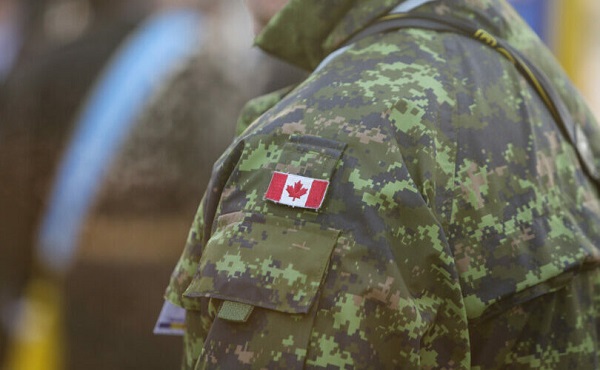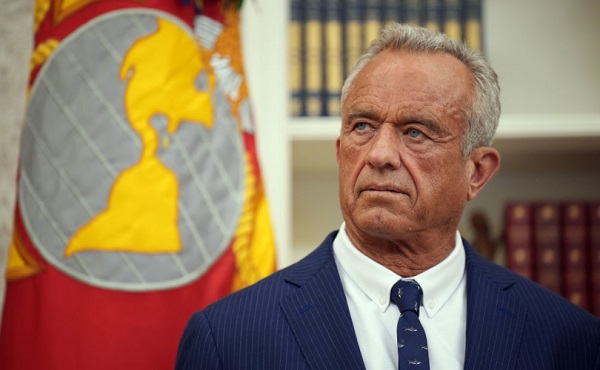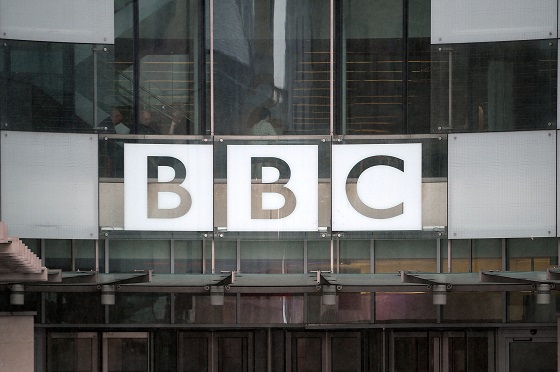Health
Jay Bhattacharya Closes NIH’s Last Beagle Lab


From the Daily Caller News Foundation
By EMILY KOPP
The National Institutes of Health has closed the last remaining intramural beagle lab conducting painful experiments — the federal government’s largest dog lab — NIH Director Jay Bhattacharya said in a television interview Sunday.
A project at the NIH Clinical Center on “stress-induced and sepsis-induced cardiomyopathy” represented the final in-house experiments that induced pain and distress in beagles, classified under U.S. Department of Agriculture pain categories D and E. The project has now been terminated.
“We got rid of all of the beagle experiments on NIH campus,” Bhattacharya said on Fox & Friends Weekend.
Dear Readers:
As a nonprofit, we are dependent on the generosity of our readers.
Please consider making a small donation of any amount here.
Thank you!
“It’s very easy, for instance, to cure Alzheimer’s in mice. But those things don’t translate to humans,” Bhattacharya said. “So we put forward a policy to replace animals in research with technological advances, AI and other tools, that actually translate better to human health.”
NIH confirmed the news in a post on X.
Watch @NIHDirector_Jay on @FoxNews with @RCamposDuffy where he discusses a new NIH initiative to expand innovative, human-based science while reducing animal use in research, including getting rid of all the beagle experiments on the NIH campus. pic.twitter.com/qfL5oepOBX
— NIH (@NIH) May 4, 2025
The NIH has killed 2,133 beagles in septic shock experiments since 1986, according to a nine-year investigation and advocacy campaign by White Coat Waste Project. Necroposy reports from 41 beagles and other veterinary records obtained by the group through the Freedom of Information Act show that the experiments involved infecting the beagles’ lungs with pneumonia-causing bacteria to induce sepsis and sometimes bleeding them out to induce hemorrhagic shock. The dogs are then euthanized.
Beagles have been used in medical experiments because of their docile temperament. The issue garnered the attention of many on social media and in Congress in 2021 when White Coat Waste revealed evidence that NIH exported $375,800 to a Tunisian lab for experiments that induced sand flies to feed on beagles locked in cages in order to study leishmaniasis. White House Chief Medical Advisor and longtime NIH official Anthony Fauci was flooded with phone calls.
“As the watchdog that first uncovered and battled Dr. Fauci’s beagle tests (the biggest animal testing scandal in history), we’re proud that White Coat Waste has closed the NIH’s last in-house beagle laboratory—and the US government’s biggest dog lab,” said White Coat Waste Project Founder Anthony Bellotti in a statement to the Daily Caller News Foundation. “We applaud the President for cutting this wasteful NIH spending and will keep fighting until we defund all dog labs at home and abroad.”
NIH sourced beagles from contractor Envigo. Envigo reached a plea agreement in June 2024 to pay a $11 million fine for violating the Animal Welfare Act as part of a larger $35.5 million settlement, the largest-ever fine in an Animal Welfare Act case, according to the US Attorney’s Office. Inspections of a Virginia breeding facility revealed the dogs were stuffed in overcrowded kennels filled with feces and fed non-potable drinking water and rotten food.
The NIH announced on April 29 an initiative to shift away from animal experimentation toward less cruel methods more directly relevant to human health such as organoids, organs-on-a-chip, computing modeling and real-world data.
NIH made several commitments as a part of that effort, including establishing the Office of Research Innovation, Validation, and Application within Bhattacharya’s office to help scale non-animal approaches; publishing annual data on the reduction in funding for animal studies; offering more training in non-animal approaches and integrating that expertise into the study sections that make determinations about NIH extramural grants.
As recently as April 15, a longtime NIH official had defended the beagle experiments, saying that “current canine models of sepsis offer several advantages in research, including similar cardiovascular anatomy and the ability to induce sepsis through mechanisms that mimic what occurs in humans,” according to an email from NIH to congressional aides shared with the DCNF.
armed forces
Why Do Some Armed Forces Suffer More Suicides Than Others?

Any single suicide is an unspeakable tragedy. But public health officials should be especially alarmed when the numbers of suicides among a particular population spike. Between 2019 and 2023, the suicide rate across Canada fell from 12.3 per 100,000 to 9.5 per 100,000. U.S. numbers aren’t that different (although they’re heading in the other direction).
Holding public officials and institutions accountable using data-driven investigative journalism.
Against this context, the suicide rate among active Canadian military personnel is truly alarming. Data included in a 2021 Report on Suicide Mortality in the Canadian Armed Forces (CAF) showed that the three year moving average annual rate for suicides in all services of the CAF was 23.38 per 100,000 – around twice the national rate. Which, of course, is not to ignore the equally shocking suicide rates among military veterans.
This isn’t specific to Canada. All modern military communities have to worry about numbers like those. Officials in the Israel Defense Force – now hopefully emerging from their longest and, by some measures, costliest war ever – are struggling to address their own suicide crisis. But there’s a significant difference that’s probably worth exploring.
Through 2024, 21 active duty IDF soldiers took their own lives. This dark number has justifiably inspired a great deal of soul searching and, naturally (it being Israel), finger pointing. But the real surprise here is how low that number is.
It’s reasonable to estimate that there were 170,000 active duty soldiers in the IDF during 2024 and another 300,000 active reservists. If you count all of those together, the actual suicide rate is just 4.5 per 100,000 – which is less than half of the typical civilian suicide rate in Western countries!
Tragic. But hardly an epidemic. Those soldiers have all lost friends and faced battlefield conditions that I, for one, find impossible to even comprehend. And those 300,000 reservists? They’ve been torn away from their families, businesses, and normal lives for many months. Many have suffered devastating financial, social, and marital pressures. And still: we’re losing them at lower rates than most civilian populations!
Is there any lesson here that could help inform CAF policy?
One obvious difference is sense of purpose: IDF members are fighting for the very existence of their people. They all saw and felt the horrors of the October 7 massacres and know that there are countless thousands of adversaries who would be happy do it again in a heartbeat¹. And having a general population that overwhelmingly supports their mission can only help that sense.
But there are some other factors that could be worth noting:
- The IDF is unusual in that it subjects all potential conscripts to mandatory psychological screening – resulting in many exemptions.
- Small, stable units are intentionally kept together for years. In fact, units are often formed from groups who have known each other since their early school years. This cohesion also helps with post-service integration.
- Every IDF battalion has a dedicated officer trained in brief interventions and utilization rates are high.
Is there anything here that CAF officials could learn from?
Health
RFK Jr. urges global health authorities to remove mercury from all vaccines

From LifeSiteNews
Health and Human Services (HHS) Secretary Robert F. Kennedy Jr. is urging health leaders across the planet to stop including mercury in vaccinations.
“Now that America has removed mercury from all vaccines, I call on every global health authority to do the same — to ensure that no child, anywhere in the world, is ever exposed to this deadly neurotoxin again,” he said.
Kennedy’s comments came in a video he recorded for the Minamata Convention on Mercury. The event is an international gathering aimed at preventing human contact with mercury, which, according to the World Health Organization (WHO), is one of the top 10 chemicals of major public health concern. The treaty, backed by the United Nations (UN), was first signed in 2013 by over 140 countries.
Kennedy noted that while the group’s goal is no doubt praiseworthy, it has not gone far enough in its efforts.
“Article 4 of the convention calls on parties to cut mercury use by phasing out listed, mercury-added products. But in 2010, as the treaty took shape, negotiators made a major exception. Thimerosal-containing vaccines were carved out of the regulation,” he recalled.
“The same treaty that began to phase out mercury in lamps and cosmetics chose to leave it in products injected into babies, pregnant women, and the most vulnerable among us,” he noted. “We have to ask: Why? Why do we hold a double standard for mercury? Why call it dangerous in batteries, in over-the-counter medications, and make-up but acceptable in vaccines and dental fillings?”
This past summer, Kennedy’s Advisory Committee for Immunization Practices launched a study to research the vaccine schedule for children. Among other recommendations, the committee advised the removal of thimerosal, a neurotoxic, mercury-containing preservative that had been used in flu shots.
Kennedy noted in his video message that “thimerosal’s own label requires it to be treated as a hazardous material and warns against ingestion,” adding that “there is not a single study that proves it’s safe. That’s why in July of this year the United States closed the final chapter on the use of thimerosal as a vaccine preservative, something that should have happened years ago.”
Kennedy further explained that thimerosal is “a potent neurotoxin, a mutagen, a carcinogen, and an endocrine disrupter” while noting that “safe alternatives” already exist.
“Manufacturers have confirmed that they can produce mercury-free, single dose vaccines without interrupting supply. There is no excuse for inaction or holding stubbornly to the status quo,” he exclaimed. “Now that America has removed mercury from all vaccines, I call on every global health authority and every party to this convention to do the same.”
“Let’s honor and protect humanity, and our children, and creation from mercury,” he concluded.
The Minamata Convention on Mercury went into effect in August 2017. It was initially approved by the Intergovernmental Negotiating Committee in Geneva, Switzerland, in January 2013. It was adopted in October 2013 at a Diplomatic Conference in Kumamoto, Japan. Per its website, it is named “after the bay in Japan where, in the mid-20th century, mercury-tainted industrial wastewater poisoned thousands of people, leading to severe health damage that became known as the ‘Minamata disease.’”
-

 armed forces1 day ago
armed forces1 day agoIt’s time for Canada to remember, the heroes of Kapyong
-

 Daily Caller2 days ago
Daily Caller2 days agoMcKinsey outlook for 2025 sharply adjusts prior projections, predicting fossil fuels will dominate well after 2050
-

 Business2 days ago
Business2 days agoTrump: Americans to receive $2,000 each from tariff revenue
-

 Business1 day ago
Business1 day agoCarney’s Floor-Crossing Campaign. A Media-Staged Bid for Majority Rule That Erodes Democracy While Beijing Hovers
-

 Housing2 days ago
Housing2 days agoTrump advancing 50-year mortgage to help more Americans buy homes
-

 Business16 hours ago
Business16 hours agoLiberals refuse to disclose the amount of taxpayer dollars headed to LGBT projects in foreign countries
-

 International2 days ago
International2 days agoBBC boss quits amid scandal over edited Trump footage
-

 Daily Caller8 hours ago
Daily Caller8 hours agoUS Nuclear Bomber Fleet Shares Fence With Trailer Park Linked To Chinese Intel-Tied Fraudster









